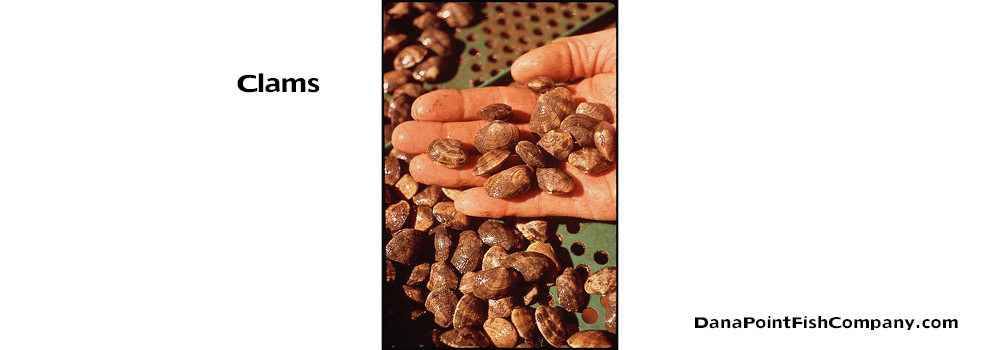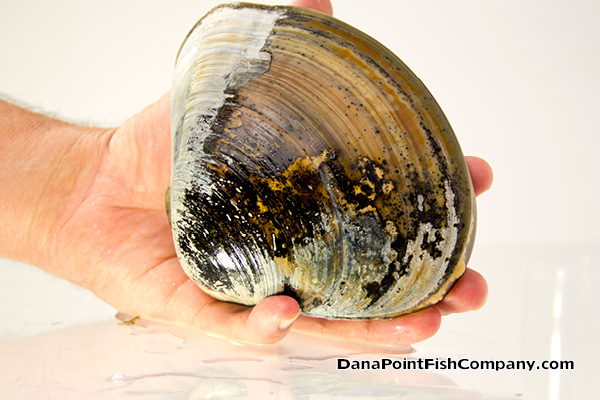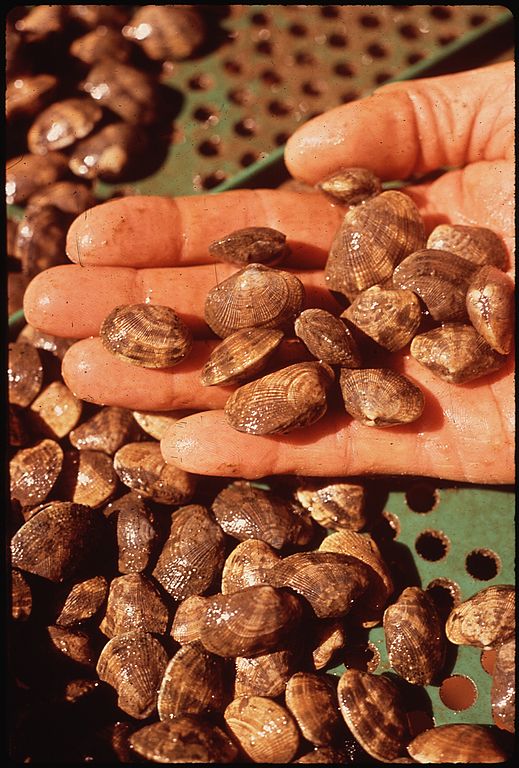Clams are bivalve mollusks, filter feeding, and are found in both freshwater and saltwater environments. They are filter feeders, and are harvested in both the wild and on clam farms. Clam diggers often look for the clam ‘show’ to identify a clam before digging it up. A clam ‘show’ is the hole or dimple in the sand that is left behind from the clam as it digs after the tide recedes.
Identifying Characteristics and Biology
- All clams are bivalve creatures connected by a hinge.
- Abductor muscles contract and release enabling the shells to open and close.
- Clams range in size to very small like the Little Neck ranging in the one-inch range to the Pismo clams, with legal size at 4 1/2 inches.
- They can be roundish in shape, or have long rectangular shells (razor clams).
Range and Habitat
- Clams are found all over the world, in fresh and saltwaters.
- Clams either live on the bottom of the waters, or can grow in enclosed areas or substrates.
- Also, they can be harvested wild or farm grown.
Market Forms
- Clams can be eaten raw, steamed, baked, or fried.
- They can be used with other ingredients in a dish, or served alone.
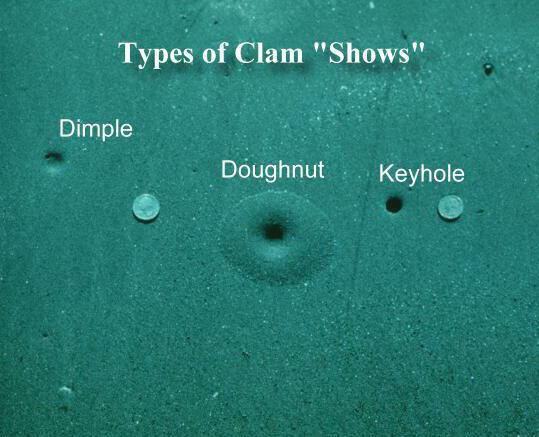
Types of Clam ‘Shows’ – Dimple, Doughnut, and Keyhole. Image courtesy Washington Department of Fish and Wildlife
Hardshell Vs. Softshell
There are two types of clams: hardshell and softshell clams. Hardshell clams have a shorter siphon than softshell clams, which like to bury themselves more deeply on the bottom. Hardshell clams do have a harder, thicker shell, but softshell clams do not have a super soft shell as the name implies. It is still a hard shell.
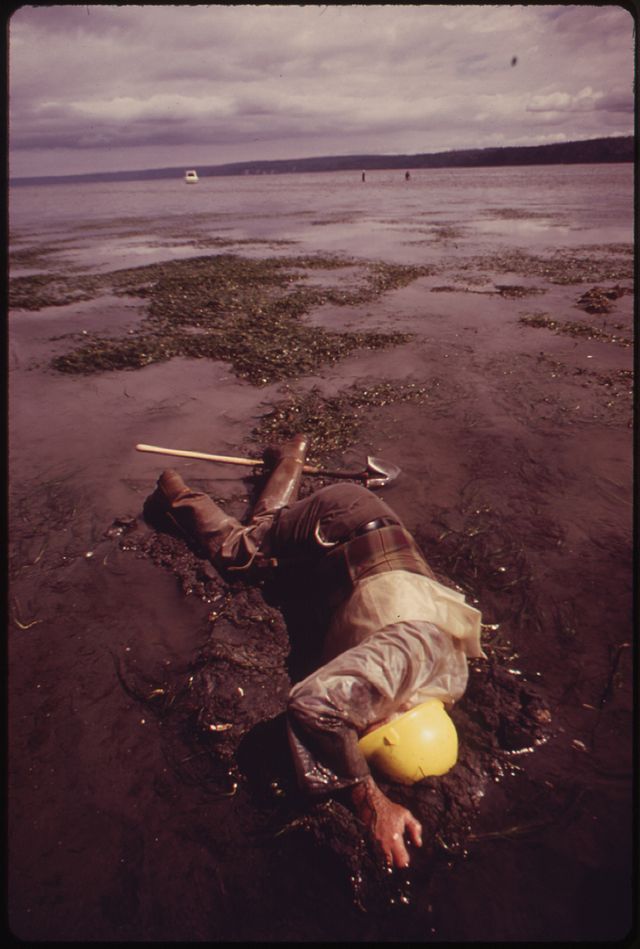
Ray Longmire of Olympia digging a geoduck clam on Dosewallips Tide Flats on the Hood Canal. Photo by Doug Wilson.

